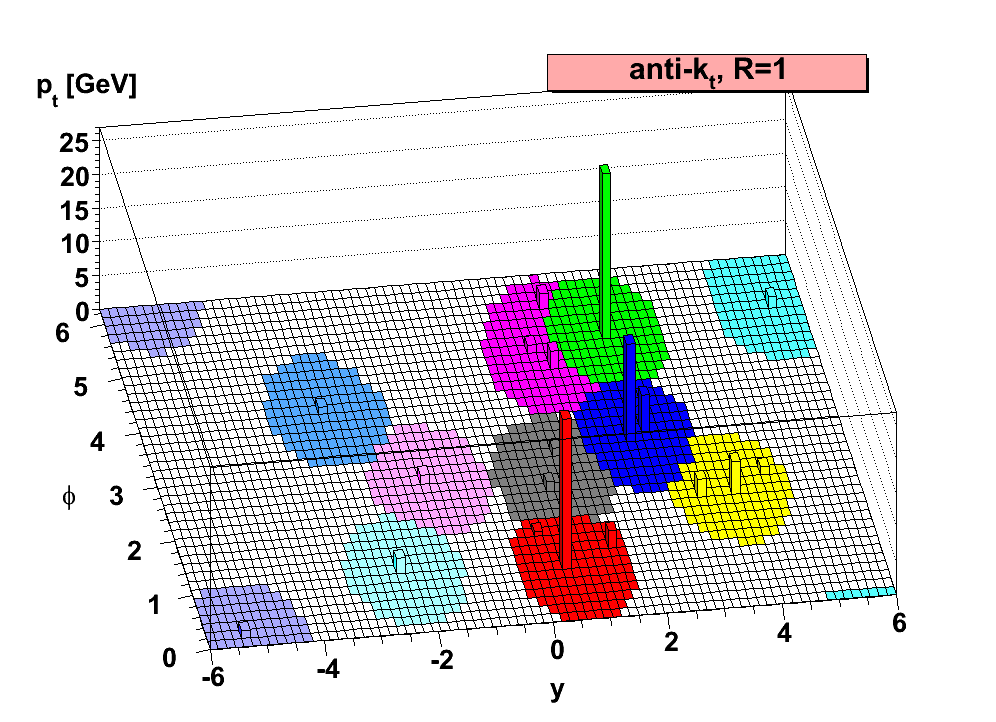
Quarks and gluons are abundantly produced in the final state of the LHC collisions. They are observed as collimated showers of particles, known as jets. Jets are crucial objects in particle physics, used e.g. in about 60% of the LHC analyses.
In practice, jets need to be reconstructed from the particles in the final state using a jet algorithm (the anti-kt algorithm [1] at the LHC). This, as well as all sorts of manipulations on jets --- e.g. calculating their area, subtracting soft contamination or studying their internal (sub)structure --- is done numerically. FastJet [2], developed by Matteo Cacciari, Gavin Salam and Gregory Soyez, is the computer interface used by the high-energy community to perform this fundamental task.
With hundreds of events recorded every second at the LHC, time is of the essence. For event reconstruction at the LHC, jet clustering is the second most time-consuming step (right after reconstructing the charged tracks). Originally [3], FastJet introduced an implementation of the clustering algorithm 2-3 orders of magnitude faster than the existing ones.
After a major improvement of the interface and functionalities of FastJet (v3.0 in November 2011), the implementation of the algorithm has been further developed. This led to another improvement in speed by a factor between 1.5 and 10, an important step for the forthcoming run of the LHC where the conditions will be more challenging than during Run I. Besides this major development, version 3.1 of FastJet (released in September 2014) also comes with a large set of new features, reflecting the important evolution in jet physics over the last couple of years. This sets FastJet as one of the key software tools in particle physics these days.
References:
[1] M. Cacciari, G. P. Salam and G. Soyez, JHEP 0804 (2008) 063 [arXiv:0802.1189].
[2] M. Cacciari, G.P. Salam and G. Soyez, Eur.Phys.J. C72 (2012) 1896 [arXiv:1111.6097], http://www.fastjet.fr
[3] M. Cacciari and G.P. Salam, Phys. Lett. B 641 (2006) 57 [hep-ph/0512210].

